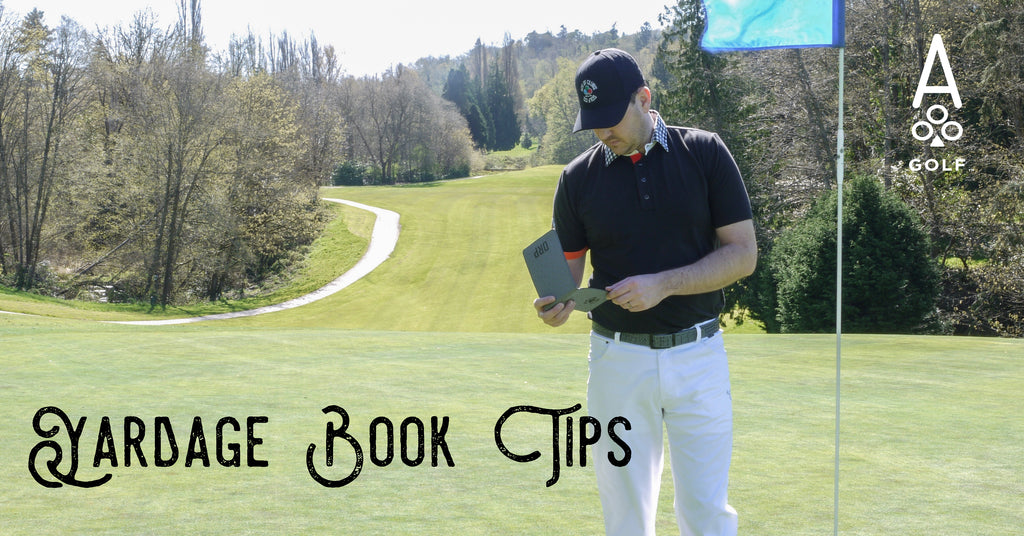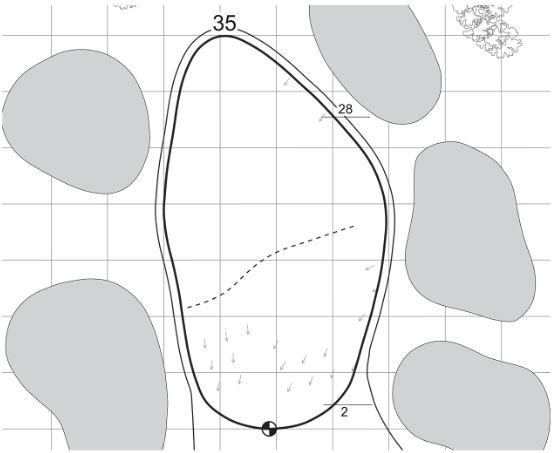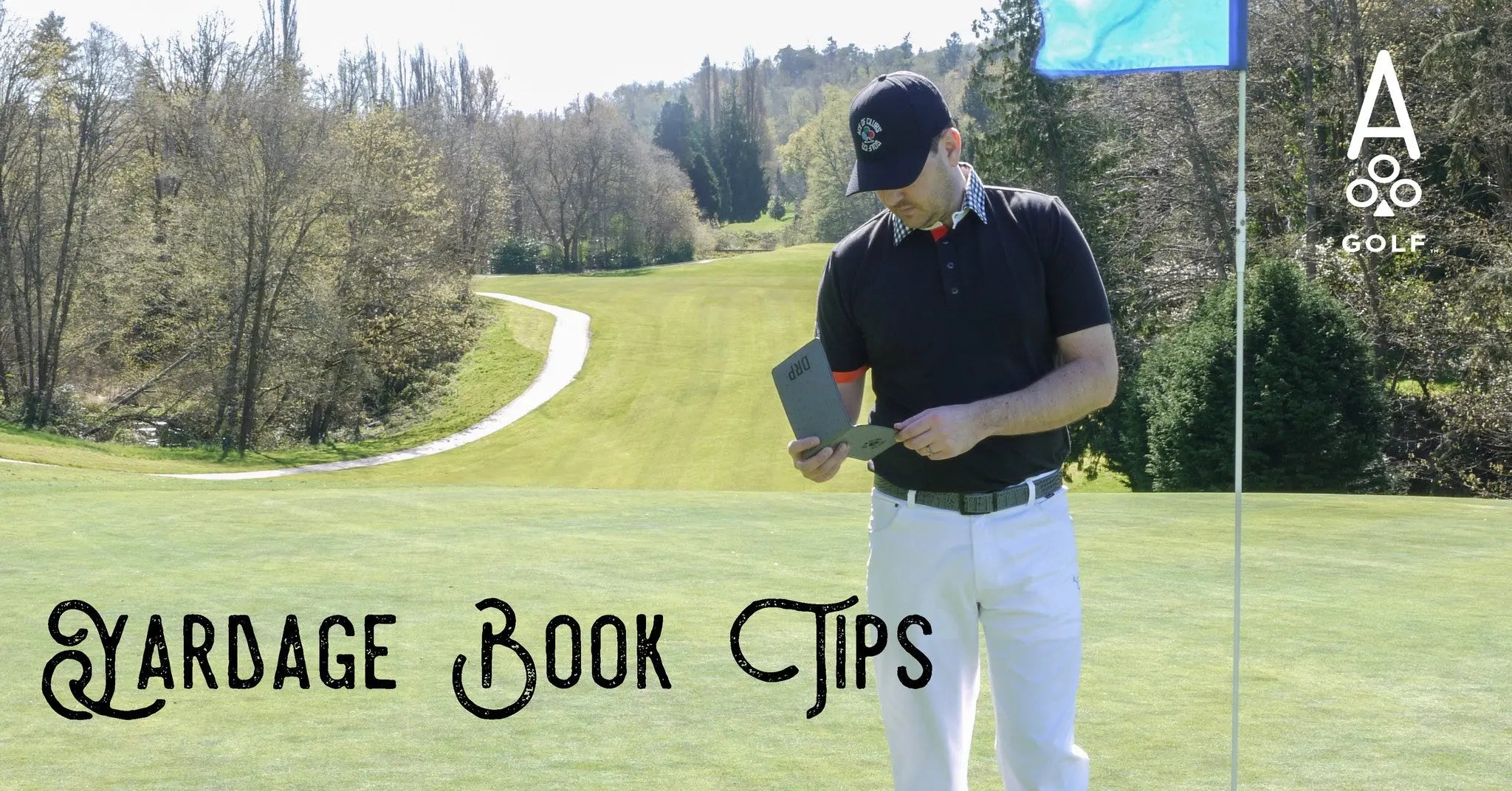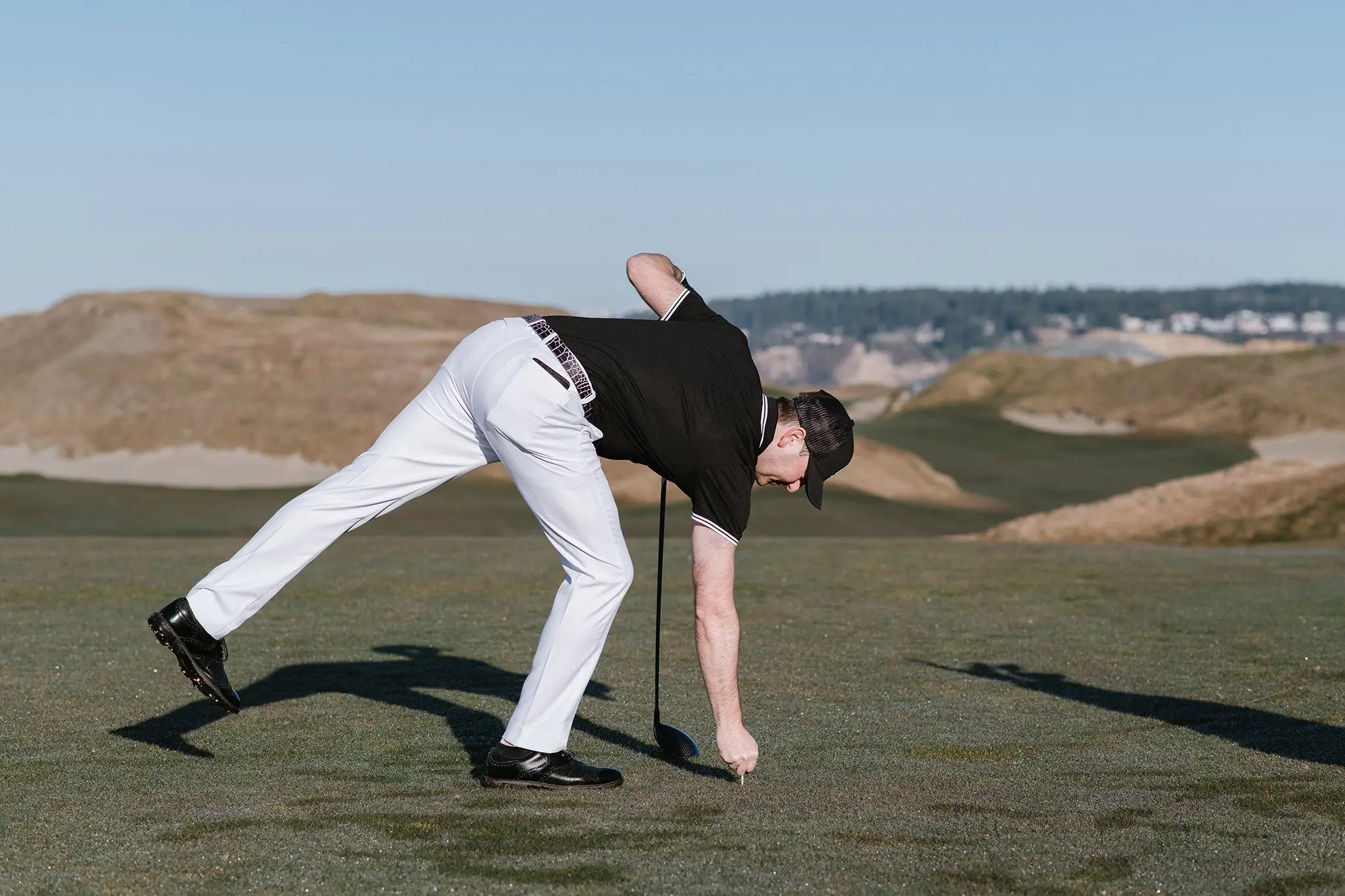
If you ever watch golf on TV, then you know that PGA Tour Professionals rely heavily on their yardage books to help develop a course strategy. The players and their caddies spend an enormous amount of time compiling information that helps them develop a course strategy that will allow them to play their best at every tournament. However, using a golf course yardage book is not something that is only reserved for Tour Pros. Any golfer, of any skill level can use a yardage book to play quicker, shoot lower scores and get more enjoyment from the game.
Lets take a look at 3 ways a golf course yardage book can help your golf game.
Looking at a typical golf course yardage book, we see a dogleg-left, 417-yard, par-4.
The first things we notice by looking at the yardage book is the overview of the golf hole. This map helps us to see the yardages to reach each fairway bunker from the tee box.
This information will help us develop a strategy for the hole that will help us to make a par, or possibly a birdie.

The second thing you will notice are the layup yardages in the event that we hit an errant tee shot.
In the event that we do hit an errant tee shot, this information will help us to select the most sensible layup position for our next recovery shot.
The third thing you will notice is the structure of the green complex, bunkering and undulation of the green's surface.
This information will help us to develop a strategy for the best approach shot into the green.
So lets set up a scenario; You are playing in the final round of your Club Championship, you are tied for the lead and standing on the 16th tee box. How do you play this hole?
Standing on the tee box, looking down the fairway and knowing that the hole measures over 400 yards, your first inclination may be to pull the driver. However, looking at the yardage book, you notice that if you choose the driver, you run the risk of ending up in one of the fairway bunkers, which could drastically reduce your ability to make par on this hole.
Also, we can see that the green is very well guarded by bunkers, which place a premium on finding the fairway with our tee shot and leaving us an approach shot from the fairway.
So we can estimate that the most sensible club to select for our tee shot is either a fairway wood or long iron. Also, you can see that you will want to aim at the edge of the first fairway bunker with a draw shot shape. If we successfully find the fairway with our tee ball, we will be left with 140-175 yards for our approach shot into this well guarded green.
In the event we hit an errant tee shot, we can be confident that will be able to consult the yardage book to formulate a plan to play a sensible recovery shot back to the fairway and leaving us with a comfortable yardage for our third shot into the green.
For our approach shot into the green, we can consult the yardage book to see the green undulation, along with knowing the pin position for that day, we can formulate the best our best approach shot into the green. Most importantly, we will know where not to miss our approach shot. This information will help us decide the best club, and shot shape to play into this green.
Once you have successfully reached the green, you can use the yardage book to keep notes of the breaks in the green's surface to draw upon when you find your self in a pressure situation.
To summarize, a golf course yardage book can benefit any golfer, of any skill level by helping you take the guess work out of developing a hole-by-hole strategy. Ultimately, this will lead to lower scores, quicker rounds and an increased enjoyment of the game.
Yardage books provided by Mark Long -- Copyright 2016 Tour Sherpa, Inc. All rights reserved.



